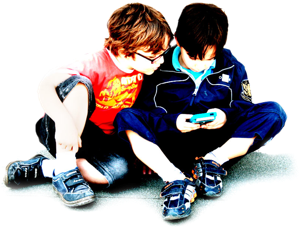Notes:»

Much has changed! Change is constant! But today, change is accelerating. ..And today, change is happening in schools. Governance boards, administrators, librarians and classroom teachers are combining efforts to resist the status quo-sustaining nature of our institution and seeking to define and implement a new style of learning – learning 2.0.
Resources:
- Transformative Questions
- Visuals
- Bibliography
- Planning Concept Map
- Related Blog Posts
- What Does it Mean to be Learned? – from Smart Blogs
For many of our students, change is status quo. They’ve witnessed an emerging new information environment and have participated in shaping its landscape, seamlessly utilizing technologies that define their culture. Their outside-the-classroom information experiences are deep, diverse, rich, and compelling — and understanding these experiences may be an important key to achieving more effective and relevant formal learning.
What are the qualities of these experiences? What are their contexts? How might we inventively implement them as classroom pedagogies?
Printable Handout for this Presentation
 I recently put together this four-page handout for a conference in Wisconsin. it does a pretty nice job of listing and briefly describing five qualities of our learners’ outside-the-classroom information experiences. I also include a number of classroom examples — of what these experiences might look like in a more traditional classroom.
I recently put together this four-page handout for a conference in Wisconsin. it does a pretty nice job of listing and briefly describing five qualities of our learners’ outside-the-classroom information experiences. I also include a number of classroom examples — of what these experiences might look like in a more traditional classroom.
Here’s the introduction:
We are preparing a new generation of learns, within a dramatically different information environment, for a future that we can not clearly describe. These three ideas or converging conditions are forcing us to rethink education and what it means to be educate for the first time in decades.
Our children, the millennials, have grown up with an information experience that has given them access to far more information, people, and diverse experiences than any generation before, and it has also isolated them from much of the world that we grew up with and continue to value. It’s not a perfect picture and it never has been.
To address the needs and unique capabilities of the millennial generation, some educators have logically promoted the integration of video games and social networking into the classroom – to “Go where the kids are.†I would like to spend a few pages presenting an alternative approach, to identify and examine some of the qualities of our students outside-the-classroom information experiences and consider ways of integrating those qualities into their curriculum learning experiences rather than trying to duplicate their games
A blog post that I wrote just before the first delivery of this keynote
The ringing proclamation at ISTE 2010 will be “Integrate Technology.” There is a lot of value in this mantra, but it is the response of a generation of teachers who grew up without computers, mobile phones, and the Internet. It all looks like technology to us.
To our students, it is merely the road ways of their daily and minute-by-minute travels and the tentacles of their nearly constant hyper-connectively. It is the hands and feet that take them where they want to go. Believing that our youngsters carry their mobile phones around with them because it is their technology of choice is a poor reason to desperately carve out ways of using mobile tech in our lessons. They carry their phones because that is where their friends are – and their is nothing new about youngsters wanting to be where their friends are.
What is new is the nature of their interactions and the culture that they have grown out of their hyper-connectivity. Cracking the Native Information Experience will seek to reach beyond the technology, identifying and exploring the unique qualities of our students’ outside the classroom activities. What is the code that makes their video games, social networks, and texting so ingrained in their lives, and how might we crack that code.
The code itself comes from work that I did with a group of teachers in Irving, Texas, a school district that has operated, since 1997, based on students having ubiquitous access (1:1) to networked, digital, and abundant information. In an online collaborative activity we identified and then factored down the elements of their students information activities that seemed to result in active learning, as opposed to the passive learning their predecessors had endured.1
- Warlick, David. “Cracking the “Native” Information Experience.” 2¢ Worth. The Landmark Project, 7 Oct 2009. Web. 17 Oct 2009. <http://davidwarlick.com/2cents/?p=1946> [↩]















